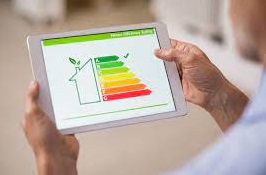
APE for two money and without inspection . Eye because a cause can arise.
APE for two money and without inspection. Eye because a cause can arise.
The energy performance certificate is one of the essential attachments in the property transfer deeds. If it is wrong they are pains.
Ing. Cristian Angeli 07/07/2022
The energy performance certificate (APE) is a certificate drawn up by a qualified technician that summarizes the information necessary to know the characteristics of a building subject to real estate transfer, in terms of energy consumption.
Since 2013 it has been a mandatory document, to be attached not only in the event of a sale, but also for rentals, donations or simple commercial announcements.
What is the APE and what are the minimum contents.
The EPA has a standard format valid throughout the national territory, structured to provide clear information on the performance and energy needs of buildings.
An Energy Performance Certificate must contain the following data, defined in Appendix B attached to the Decree of the Ministry of Economic Development of 26 June 2015 :
- identification data of the property and the owner
- intended use
- subject and motivation of the certificate
- energy services present
- overall energy performance and of the building
- performance of plants and estimated consumption
- general energy data
- data of the plants
- information on improving energy performance
- data of the certifying entity and of the software used.
The energy class of the building (identified in the descending scale A4, A3, A2, A1, B,, C , D, E, F, G) is determined on the basis of a parameter called the global energy performance index. The lower the class letter (e.g. F or G), the higher the energy consumption.
Why the EPA is important.
Already in the Notary’s studies it is highlighted how the energy performance certificate can be considered as an essential element, aimed at providing the owner and the buyer with the correct information, all on the assumption that knowing the performance of the building before purchasing as well as being properly informed about the tools for improving efficiency, is one of the fundamental elements that lead to the conclusion of the contract.
The improvement of energy performance thus becomes, as far as sellers are concerned, a factor to make the property more “attractive” on the market, and as regards buyers, an element to be evaluated in determining the price, with a view to containing energy consumption , which in a historical moment like this takes on particular relevance.
The EPA in practice.
Unfortunately, in practice, the energy performance certification is underestimated and, at times, is seen as an unnecessary burden on the selling party, trying to circumvent it with quick and cheap tricks.
It even happens to read advertisements in which unlikely certifications are proposed remotely and without an in-depth analysis of the property.
Nothing could be more wrong because the consequences, for the seller and for the technician who drafted the document, can be serious and burdensome. When the APE is delivered to the buyer and / or attached to the deed, a real guarantee is given regarding the quality of the property, with the resulting consequences in terms of legal protections.
Wrong APE. Claim for damages also for loss of tax benefits.
If Tizio buys a property with an energy performance certificate that puts it in class B and, from verifications, it turns out to be actually in class D, he can ask the seller for compensation equal to the difference in the market value of the asset or, in line with right, even the termination of the contract where it proves that, if he had been aware of the error, he would not have proceeded with the purchase.
The alienating party could then retaliate against the technician who drafted the document in order to be indemnified from the request for damages, with consequent involvement of the insurance and birth of a lawsuit.
Even worse problems if the purchase was linked to a building renovation with access to tax incentives. The Superbonus 110% (“eco” version) in fact presupposes that, from the efficiency measures , there is a jump of at least two energy classes.
Thus, if the APE attached to the deed of sale indicates – erroneously – a class D and, following checks, it should prove that the real class of the building is B, it would be much more difficult (or even impossible) to obtain the double class jump.
In this case it is clear that the “damage” could also be extended to the loss of the corresponding tax benefit which, only with regard to thermal insulation interventions (insulation), can reach the following limits, to be multiplied by the number of real estate units that make up the building:
- € 50,000 for single-family buildings and functionally independent units;
- 40,000 euros, for condominiums consisting of 2 to 8 real estate units;
- 30,000 euros, for condominiums consisting of more than 8 real estate units.
Numbers that are scary and that demonstrate the importance of turning to expert professionals who actually carry out all the checks necessary to determine the APE of the building being sold.
Source: https://www.condominioweb.com/ape-a-due-soldi-e-senza-sopralluogo-occhio-perchepuo.19518#2
GECOSEI by Giuseppina Napolitano


